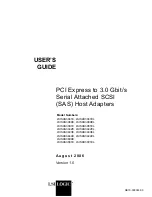
S e n d d o c u m e n t a t i o n c o m m e n t s t o m d s f e e d b a c k - d o c @ c i s c o . c o m
39-8
Cisco MDS 9000 Family CLI Configuration Guide
OL-16184-01, Cisco MDS SAN-OS Release 3.x
Chapter 39 Configuring Users and Common Roles
Configuring Common Roles
Example 39-3 Displays Information on the Pending Roles Database
switch#
show role
pending
Role: network-admin
Description: Predefined Network Admin group. This role cannot be modified
Access to all the switch commands
Role: network-operator
Description: Predefined Network Operator group. This role cannot be modified
Access to Show commands and selected Exec commands
Role: svc-admin
Description: Predefined SVC Admin group. This role cannot be modified
Access to all SAN Volume Controller commands
Role: svc-operator
Description: Predefined SVC Operator group. This role cannot be modified
Access to selected SAN Volume Controller commands
Role: TechDocs
vsan policy: permit (default)
Role: sangroup
Description: SAN management group
vsan policy: deny
Permitted vsans: 10-30
---------------------------------------------
Rule Type Command-type Feature
---------------------------------------------
1. permit config *
2. deny config fspf
3. permit debug zone
4. permit exec fcping
Role: myrole
vsan policy: permit (default)
---------------------------------------------
Rule Type Command-type Feature
---------------------------------------------
1. permit config fspf
Use the
show role pending-diff
command to display the differences between the pending and
configuration role database. See
Example 39-4
.
Example 39-4 Displays the Differences Between the Two Databases
switch#
show role pending-diff
+Role: myrole
+ vsan policy: permit (default)
+ ---------------------------------------------
+ Rule Type Command-type Feature
+ ---------------------------------------------
+ 1. permit config fspf
Configuring Common Roles
The CLI and SNMP in all switches in the Cisco MDS 9000 Family use common roles. You can use
SNMP to modify a role that was created using the CLI and vice versa (see
Figure 39-1
).
















































